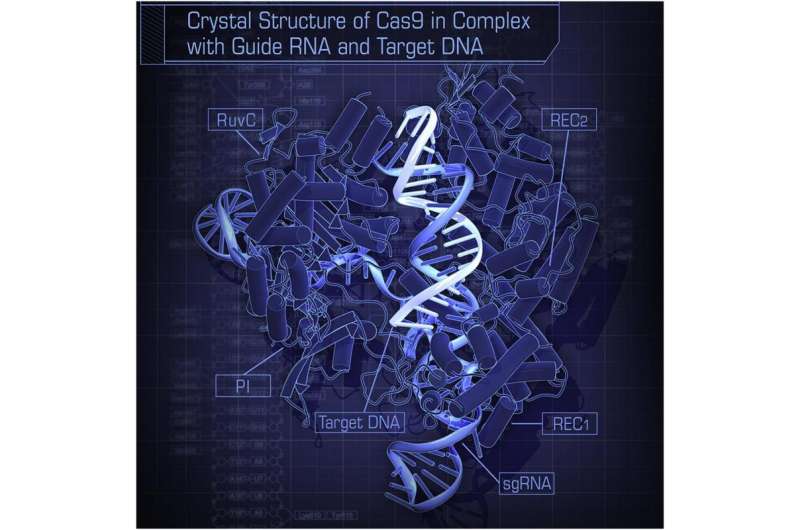January 13, 2016 report
Patent office agrees to move forward with interference hearings on CRISPR/Cas9 inventor case

(Phys.org)—The United States Patent and Trademark Office (USPTO) officially agreed this past Monday to move forward with interference hearings regarding the case of the true inventor of the CRISPR/Cas9 gene editing technique. This sets the stage for a major battle between two groups of scientists, their affiliated institutions and supporters backing one or the other who hope to reap large financial rewards from its use.
CRISPR/Cas9 has been in the news a lot of late, as it has been used to edit genes in ways that were never possible before, allowing for a whole host of new research opportunities. The development of the technique has taken a long and winding road as is the case with most modern inventions, with many people from around the world making small contributions to the science of gene editing which eventually led to some researchers having what was needed to develop the new technique. At least two teams of them filed for a patent on the product in the U.S. The first was a team with the University of California, led by Jennifer Doudna, they filed for a patent in late 2013. The second was a team affiliated with MIT and the Broad Institute, headed by Feng Zhang—they filed in early 2014, but, realizing they had something pretty special, they asked for and were granted an expedited process which meant that their patent was granted before the one submitted by the UofC team was completed, leaving the UoC team out in the cold.
This past April, attorneys for UoC requested an interference on the case, claiming they should have been granted the patent because they filed first—the request by the MIT team should have been recognized as an interfering party, they claim, because their application interfered with the original.
The judge on the case, Deborah Katz, designated the UoC team as the "senior party" which essentially means that the USPTO is starting the hearings with the assumption that the UoC team should hold the patent, leaving the MIT team to prove that it invented the procedure first, regardless of who filed first.
There is one minor detail in the case that could turn things in MIT's favor—when filing for the patent, the UoC team did not include words describing the technique as something to be used on mammalian cells—including humans. They were more general, whereas the MIT team was much more specific regarding how the technique could be used.
It is not likely there will be quick resolution to the dispute, both sides will likely be given time to find and compile pertinent evidence and then to present it, and others might be allowed to chime in as well. All in all it could take months, but the effort should be more than worth it as there are millions to be made in licensing fees.
© 2016 Phys.org

















